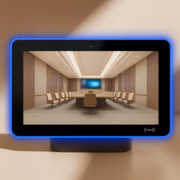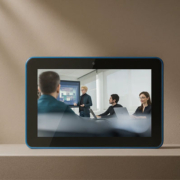What Are the Disadvantages of Digital Signage?
Digital signage has revolutionized how businesses communicate — offering dynamic, real-time messaging, interactivity, and brand engagement like never before. But while it offers many benefits, it’s not without its drawbacks.
Understanding the disadvantages of digital signage helps businesses make informed decisions, plan better, and avoid common pitfalls.
1. Higher Initial Investment
One of the biggest concerns for small businesses is cost. Unlike static posters, digital signage systems involve:
- Hardware (screens, players, mounts)
- Software (CMS platforms, licenses)
- Installation and setup
- Ongoing maintenance
Even entry-level systems can be more expensive upfront than traditional signage. However, costs often pay off over time through flexibility and reduced printing expenses.
2. Maintenance and Technical Issues
Digital signage systems include electronics and software — both of which may face:
- System crashes
- Display blackouts
- Software glitches
- Internet connection issues
This means you may need IT support, either in-house or outsourced. For critical environments like transportation or healthcare, downtime can impact user experience or operations.
3. Complexity for Non-Technical Users
Setting up content scheduling, media playlists, and screen zones can be confusing for users who are not tech-savvy. Without proper training, staff may struggle to:
- Update content
- Fix playback issues
- Use cloud-based CMS platforms
This is why user-friendly software and vendor support are crucial.
4. Power and Connectivity Dependence
Unlike printed signage, digital signage depends on electricity and internet. A power outage or network failure can make your signage go dark.
In some installations, ensuring stable PoE (Power over Ethernet), Wi-Fi coverage, or surge protection adds extra cost and complexity.
5. Content Fatigue
Digital signage requires regularly updated content to remain relevant and engaging. Outdated videos, old promotions, or static playlists can make your signage lose impact.
Without a content strategy, your investment may become a digital wallpaper rather than a marketing tool.
6. Security Concerns
If your signage system is network-connected, it can become a target for hacking or unauthorized access. Common risks include:
- Inappropriate content uploads
- Unauthorized access to admin controls
- Network vulnerability (especially in public spaces)
Using a secure CMS, strong passwords, and regular updates is critical to mitigating these risks.
7. Visual Clutter in Oversaturated Environments
In environments like shopping malls or city centers where digital screens are everywhere, too many digital signs can cause viewer fatigue. If not properly designed, your content might be ignored.
Strong content design and positioning are necessary to stand out without overwhelming the viewer.
Final Thoughts
Digital signage offers tremendous potential — but it’s important to understand the challenges as well:
- Higher upfront costs
- Technical upkeep
- Need for fresh content
- Dependence on power, software, and network
That said, working with a professional provider like Portworld can help minimize these disadvantages. We offer robust, customizable digital signage hardware with long-term support, user-friendly systems, and OEM/ODM flexibility to meet your specific needs.










